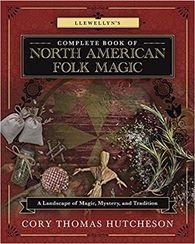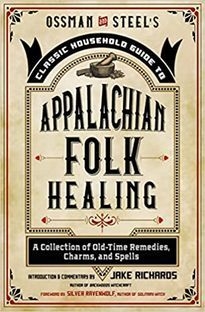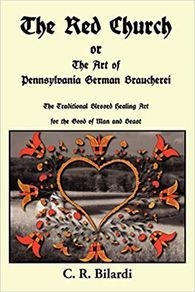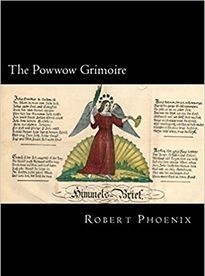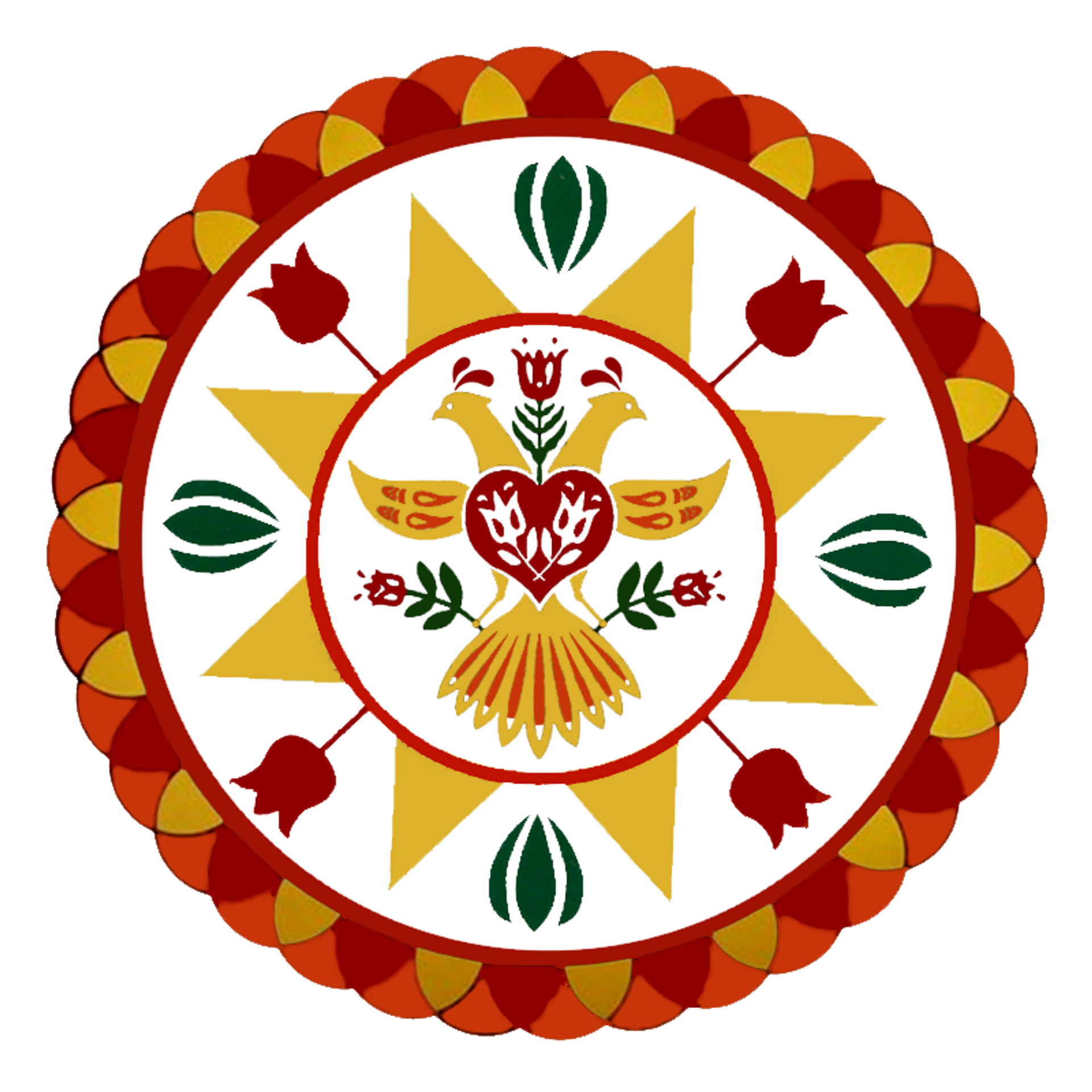

The Powwow Guy
Home of Robert Phoenix and Traditional Christian Pennsylvania German Powwow
+ + + Welcome + + +
I recently did an interview for Perseus Arcane Academy. Check it out HERE!
"Powwows consider themselves staunch Christians who have been endowed with supernatural powers, both to heal and to harm."
- Rosemary Ellen Guiley, The Encyclopedia of Witches and Witchcraft, 1989


me and my son, Josani Phoenix, at the Pennsylvania German Folk Festival, 2022
My family tree is an interesting one, and I can trace my father's side to Austria through the Koenig line and my mother's side to Germany through the Dinkelackers. On my father's side, there was disruption in the Koenig line when a relative, Mary Koenig, moved to Lancaster County and married a Catholic with the last name Chretien. The family split at this point and Mary was known as a Braucher in the Lancaster area. Her daughter Emma continued the family Braucheren practice. I am very proud that I have this in my lineage. It explains my own draw to this tradition and I thank God for leading me along this path!
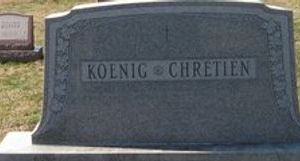
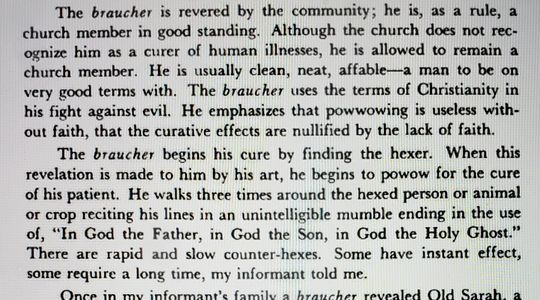
Snippet from Midwest Folklore, Paul Frazier, 1952
There's a LOT of information here on this site. My best advice is to start on this page with this video! Welcome!
"In Jesus' name, I try for thee, in the name of the Holy Trinity..." Secrets of Sympathy
CHECK OUT MY YOUTUBE CHANNEL! I teach all sorts of things about Pennsylvania Dutch Powwow!
Patrick Donmoyer's discussion of Pennsylvania Dutch Powwow is definitely a must-watch! Check it out below!

Who am I?
My name is Robert Matthew Phoenix and I am a Powwow (also known as a Hexenmeister). A Powwow is a faith healer and folk magician native to Pennsylvania with German-speaking ancestry. My ancestors are from both Germany and Austria and I follow the religion of my family, which is German Reformed. I use folk charms, remedies, herbal medicine, talismans, and other types of folk spirituality to help those who come to me in need. Powwow is a tradition of healing and folk magic that understands that through the intercession of God and the Holy Trinity we can find wholeness and healing. We seek to actively work against the machinations of the Devil, as well as other harmful spirits and diseases, and bring healing to those who seek it. Our job is to overcome evil on God's great earth. Powwow is more than simple folk remedies, it is a way of life. It's living with your land, growing and harvesting food and medicine, and using your skills everyday to keep yourself and your family safe and healthy, as well as answering the call to bring healing to others.
I am proud of all the work I've done over the past twenty-plus years. I am an author for Llewellyn (Llewellyn's Complete Book of North American Folk Magic), The History Press (Supernatural Lore of Pennsylvania - as Robert Chapman - and Witches of Pennsylvania - just my photographs), and Amazon (The Powwow Grimoire, The Powwow Guy, The Powwow Book of Divination). I've also written an introduction for a Powwow book by Jake Richards for Weiser Publishing and consulted on a fiction novel published by Tangled Tree Publishing,! I was interviewed for the 2015 documentary Hex Hollow: Witchcraft and Murder in Pennsylvania. I've been interviewed countless times by podcasts, newspapers, and even had an article published in the Fortean Times! I've done classes at Swarthmore College, Indiana University of Pennsylvania, and Baltimore College, as well as numerous workshops for various shops and venues. I've spoken at Historical Society meetings and organized public events such as Legends and Lore of the Keystone State at the Pennsylvania State Museum in Harrisburg. I have been writing about Powwow and teaching the truth of our tradition for well over two decades and I make no apologies for my adherence to tradition!
+ + +
Welcome to the world of Pennsylvania German Braucherei/Powwow...
Whether you are new to the topic or a seasoned practitioner, I hope you will find something here to educate you on our amazing tradition.
One of the greatest things about the tradition of Powwow is that it is one of the best recorded folk traditions in the United States. We literally have EVERYTHING, so us modern folks don't need to "make stuff up". We know what historical Powwowers did. And we know how to work the tradition in modern times. We know the religious foundation of Powwow. We know the historical and cultural truth of our tradition.
Let the words of George Frederick Helfenstein, author of The Secrets of Sympathy, written sometime in the 1700's and considered a foundational text for the practice of Pennsylvania German Braucherei/Powwow, give you a taste of what you will find here;
The following are useful works for a Christian to have in the home: Whoever possesses these writings, unto them no fire will break out, and absolutely no conflagration will occur. Likewise neither plague nor pestilence will erupt among man or beast. It will be found to be both so beneficial and useful for man and beast, that it will become indispensable to the owner, and with me he will proclaim: "Great are the works of the Lord."
CLICK HERE to listen to an interview with an older Pennsylvania Dutch woman who recalls Powwowing.
Click below to hear the recording of Dark Sun Rising, the podcast I was on in August 2021!
“Pow-wowing was essentially a religious movement which regarded illness as the work of the devil, an evil manifestation to be expelled by charms, herbs, manipulations and incantations delivered by an empowered believer in the Scriptures,...brauchers were basically faith healers who drew direction from Biblical verses, ancient texts and medieval manuscripts. They used herbal remedies and charms, words written on slips of paper often held in fabric braucher bags. They cured human and animal ailments, often using charmed circles they drew on the ground around the patients and foul-smelling ointments to fend off evil and disease. They resolved personal problems, pronounced incantations and performed laying on of hands.” Lehigh University professor Ned D. Heindel “Hexenkopf: History, Healing & Hexerei.”
schlechte Absicht führt zu einem vergesslichen Geist
For our wrestling is not against flesh and blood, but against the Principalities and the Powers, against the world rulers of this darkness, against the spiritual hosts of wickedness on high. EPHESIANS 6:12
A bit about my connection to the Pennsylvania German culture...
I am descended from the Koenig family from Austria on my father's side, and on my mother's side we are descended from the Stillwagners from Germany and the Dinkelackers, also from Germany. The Koenigs came to Pennsylvania for religious freedom. They were German Reformed. The Stillwagners were a strange family; whom my mother remembers as being somewhat intimidating and spooky. My grandmother was from this line. The Dinkelackers are interesting because they are still in Germany and own a very successful beer brewery. There are several instances of animosity in my family tree between the Lutheran ancestors and the Catholics they fell in love with. It is thought that at least one ancestor in the Koenig family married a Catholic in the Lancaster area and she and her daughter were Powwowers. However, this branch of the family tree was essentially cut off due to their conversion to Catholicism....
Being a Powwow is like tapping into the life of our ancestors... It's like spending the weekend at my grandparent's home where they had acres and acres of wooded lands... it's like the fresh tomatoes from my grandmother's garden and her homemade dandelion leaves with hot bacon dressing (that I never liked!), and it's like visiting the neighbor Rollie in his cabin just across the creek. Powwow is like seeing Jesus place His hands on the sick so they get well, but somehow working through you. It's like knowing the tricky Devil is lurking about but thwarting his every move. Powwow is a way of life, but it's also about keeping your grandparents alive in this world even though they've moved on to the next one. Powwow is about preserving Pennsylvania as our state was meant to be; a land of freedom of belief and magic and mysticism. It is about bringing the culture of our ancestors into the modern world so that their values can stay alive, while bringing healing to those in need and fighting off the Devil who is one of the constants throughout history.
When I was a kid, a buttercup held under your chin could tell if you were truly sick or if you were healthy, if you had a good night's sleep you could fend off the devil but if you were tired all day then the devil could "take hold". If you ate your greens then you would be healthy but if you didn't clean your plate then my grandfather would call you "dumkupf" and laugh at you.
I live in Cumberland County, part of the "Hex Belt" of Pennsylvania (counties that have a strong presence of powwow), right near the Susquehanna River, and I drive across it every day on my way to my office. I kayak in these waters and I've also been known to swim in them. In the old days, the Brethren (called River Brethren for this very reason) would Baptize their new members in these waters, not far from where I live now. It's believed that a treasure has been hidden in this river that is akin to the Sorcerer's Stone. Mysticism is very much a piece of the culture of those of us who live near and along the Susquehanna, and that too is another legacy of Pennsylvania. The most famous witch in our area, The River Witch of Marietta, had her home along the Susquehanna River, just a few short miles from me..
I get most of my clients in the Fall, when the excitement of Summer has passed and life begins to turn inward. That's when people start to notice their aches and pains more. It's also when people start to feel more spooked, and so they reach out to me for protection against curses and ghosts and witches. Witchcraft has a big following in this area, and in Pennsylvania as a state, but around here it has many covens and clans and therefore there is plenty of work for a Powwow like myself.
Family, tradition, culture, mysticism, religion, geographic location, and calling from The Almighty...
This is what Powwow is for me.
Here is a good article about Powwow, what we believe, etc.
Here is an amazing copy of the 1976 Winter Edition of Pennsylvania Folklife. In addition to articles about the history of Black music in Philadelphia and a convenient method of making roof shingles, there is a brilliant article on Powwowing that is a MUST READ.
Here is an excerpt:
These "faith-healers," as some called them, were to
be found almost anywhere; and they were usually in great demand. I remember, as a kid of ten, when a family had moved from a distance, into a neighboringfarm, and this woman came to my parents' home on some errand. She inquired as to the location of a reputable powwower. When my grandfather asked if she believed in it, she replied, "Oh, sure! And if I didn't, then I'd quit going to church! It was all that Jesus did- laying on of hands!"
HERE"S A GOOD ARTICLE about the hexenkopf (The Witches Head) in Eastern Pennsylvania where it is believed that local powwowers would send the illnesses they removed from their patients.
"Essentially, powwow doctors ministered to the sick using practices that were borrowed from liturgical tradition. It should therefore be no surprise that some pastors participated in the tradition and that any form of sanctioning from the clergy would be valued by the laity. In fact, the names and reputations of ministers are generously interwoven through powwow narratives, with representatives in many denominations."
-Patrick Donmoyer, Powwowing in Pennsylvania (a collaborative effort with Glencairn Museum 2017)
What can you do for me? I'm a powwow. That means I believe in the Holy Trinity of God the Father, God the Son, and God the Holy Spirit. While I have studied and learned many things over the years, including new age paganism and witchery, I have returned to my family roots as a Christian and have incorporated all of my skills into my practice of powwowing. If you come to me, it is with the understanding that I am a Christian and I will be trying for you using the historical, cultural, and religious practice of powwow. I can try for you if you need healing. I can do anti-hex work for you if necessary, but that will be up to me if the situation warrants it. I do not charge money for my healing work because the power is God's, not my own. However, if you ask me to create a talisman or charm or to undertake some very serious anti-hex work, I may ask you to cover my expenses. I will take your situation into consideration and let you know what I believe the best course of action is. Most often I will give you suggestions about what you can do for yourself while I do some stuff on my end.
I will not work a hex for you, no matter what you may offer. I take my magic very seriously and will not respond to frivolous or dangerous requests.
Don Yoder, considered by many to be THE expert on powwowing, describes powwow as "Pennsylvania's native brand of religious healing, on the folk-cultural level, using words, charms, amulets, and physical manifestations in an attempt to heal the ills of man and beast."
Powwowing is the folk magic system as practiced by the Pennsylvania German culture for the past three hundred years, give or take, here in rural Pennsylvania. It is a blend of many systems, such as folk Christianity and eastern European superstition; ceremonial magic, Cabbalistic influence, and Judeo-Christian folklore.
"In later years a book of "pow wows" confirming authority given by Jesus to the Elders of the Church, and evidencing some use and nurture among their forbears, was to become a household book, at least with others of German extraction. Known as a "ga-brauch buch," it had a wide circulation, and is still in demand by the descendants of orthodox families and many non-Amish who have heard of its virtue."
A.M. Aurand, The Amish, 1938 READ FULL TEXT HERE
A Remedy Against Worms - In Man or Beast
Mary, the holy, went over the land,
She had three worms in her hand;
One was white, another black and the third was red.
Stroke the person (or animal) you would benefit. At each repetition strike him on the back; the first time, once; the second time, twice; the third time, thrice; and set a time for the worms, but not less than three minutes.
Much of what we know as Powwow comes from writings such as Albertus Magnus Egyptian Secrets and John George Hohman's Long Lost Friend and also the Romanusbuchlein. It is a relatively simple folk magic practice used for healing common ailments, protection against certain conditions, and other daily household cures and charms. Powwowing originated with European magical practices and was brought here to Pennsylvania by the German-speaking immigrants who became known as the "Pennsylvania Dutch".
The history of the German and Swiss immigration to Pennsylvania was all about religious freedom and economic opportunity. In the German provinces, as well as Austria and Russia and other European locations, the people were not given a choice in their religious practice. Anyone not in line with the beliefs of the royalty were considered heretics and were often hunted down, arrested, put on trial, or worse... Once the Reformation began, religious tensions ran high, and persecution became commonplace. The Anabaptists knew persecution better than anyone. Their beliefs in adult baptism (that conversion should be a choice) were considered heretical, and their people were hunted down and, in many instances, beheaded. For a more in-depth look at the many Anabaptists who died for their faith, read The Martyrs Mirror. The promise of religious freedom in the New World by William Penn, who was himself quite familiar with religious persecution, was appealing to them, and the waves of immigration began. Early Pennsylvania was both a time of hardship as the people established homes and lands for themselves, but also an exciting time where the Anabaptists, the Quakers, the Brethren, the Moravians, the Lutherans, the Reformed (and a host of other smaller Christian sects) found freedom of religious expression. The fact that our ancestors could choose which church to attend was a very big deal for them, and is part of what makes Pennsylvania such a culturally-diverse state.
The Pow-Wow practitioner is more closely allied with theology than medicine and feels he is a mediator between the patient and God. Among the Pennsylvania Germans, the "plain folk," such as the Amish, Dunkers, and the Mennonites, as well as among the Lutheran and German Reformed church members - Pow-Wow and the Pow-Wow doctor has a significant following. (read the full article HERE)
-The Origin and Practition of Pow-Wow
Among the Pennsylvania Germans
By Patrick James Dugan
Mer sott em sei Eegne net verlosse; Gott verlosst die Seine nicht.
"One should not abandon ones own; God does not abandon his own."
-Amish proverb
___________________________________________________________________________________
And so the immigration began, and the Pennsylvania German culture began to form....
In 1683 the Plain Sects began to arrive in William Penn's Colony seeking a land of peace and plenty. They were a mixed people; Moravians from Bohemia and Moravia, Mennonites from Switzerland and Holland, the Amish, the Dunkards, the Schwenkfelds, and the French Hugeunots. After the lean years of clearing the land and developing their farms they established the peace and plenty they sought. These German-speaking people were originally called the Pennsylvania Deutsch but time and custom have caused them to be known to us as the Pennsylvania Dutch.
-Pennsylvania Dutch Cookery READ THE ENTIRE BOOK HERE
When we think of the "Pennsylvania Dutch" ( or Deitsch, or, more properly, German), we tend to think primarily of the Mennonites and the Amish. But these groups make up only a small fraction of the Pennsylvania German culture. The fact is, the majority of what remains of the Pennsylvania German culture here in our home state of Pennsylvania are 'regular folks' just like everyone else. Many of us no longer live on farms or in the early settlement areas once inhabited primarily by the Germanic/Swiss immigrants. However, our way of life is still our own, and we fiercely cling to those bits of our ancestor's culture that define us as one of the most influential cultures in American history.
Folk magic and faith healing are very much ingrained in the Pennsylvania German culture. And the Mennonites and Amish were not immune to this either, despite their strict religious views. In fact, powwowing and the Christian faith go hand-in-hand, and often the lines between biblical admonition against folk magic and powwowing are quite blurry.
"Sympathy curing, also called powwowing, plays a minor role in Amish healing even though some Amish condemn the practice. Powwowing is defined as a native brand of faith healing - using words, charms, amulets, and physical manipulations in an attempt to heal man or beast. Other terms used for powwowing are "charming", "conjuring", "to try for", and "to use" (a direct translation from the German term Brauche). Powwowing apparently has no direct connection to Indian folk medicine, but was transplanted to America by immigrants from the Rhineland and Switzerland. The practice is not unique to the Amish, for at one time it was a common healing art among Pennsylvania Germans."
--excerpt from Amish Society, Third Edition, by John A. Hostetler 1980
According to Don Yoder, foremost expert on the history of Powwowing, "Central to this form of religious healing is faith in God, faith in the powwow doctor, and the patient's faith in himself....Though powwow doctors will work on any kind of animal, adult patients must have been baptized as Christians. Exceptions are made for children not yet baptized." The full article, appearing on philly.com 1997, can be read HERE.
To study powwowing, one must really immerse themselves into the study of the Pennsylvania German culture, alongside the history of our religious development both in our ancestral countries of Switzerland, the Rhineland, Austria, and so forth, and here in Pennsylvania. The development of the two are very much intertwined. To follow the practice of powwowing throughout history is to follow the progress of our culture; from the earliest waves of immigration into the modern day. Sadly, the fading of powwowing from popular view is also a testament to the thinning out of Pennsylvania German culture, and a sad view of the loss of our cohesion. My fear is that someday our culture will be a thing of the past, and that is why I work so hard to preserve this information.
Powwowing, while well-known and practiced within Pennsylvania German society, was not always understood or accepted by those outside of our culture. The faith healing practices and home remedies were often a part of the reason that our ancestors were referred to as the "dumb dutch". But within our community, the practice flourished and was quite successful. We see more evidence of powwowing from the early 1800's forward, after the largest groups of immigrants came to this country.
"An Anabaptist healer, it is recorded, cured sprained ankles in the following manner. "Between eleven and twelve o'clock at night he came to the patient's bed, opened a book of spells from which he read a few cabalistic formulas, while touching the injured foot from time to time with the tip of his outstretched hand, as to form a cross". Following this the healer continued reading beside the fireplace in a grave, deep-set voice for half an hour. The healing was not to take place until a second set of operations was concluded."
-The Amish, John A Hostetler
The medical profession had an intense dislike for the practices of powwowing and, as was standard at the time, they often did intensive studies of our cultural healing methods and wrote lengthy papers on them; most often in an attempt to paint the Pennsylvania German culture as superstitious and uneducated. One such example is Folk-Medicine of the Pennsylvania Germans, a lecture presented in May 1889 by W.J. Hoffman, M.D. While works like these are important because they help preserve aspects of Pennsylvania German folk healing that might otherwise not have been written down, the tone in which many of these professionals presented their findings is rather biased. You can read the entire text HERE.
In the early 1900's, it was common for scholars and other writers to label powwow doctors as "witch doctors". In most instances, this is a harmless usage of the term, although it can be misleading. In other cases, it's almost meant as a derogatory statement against a system of magic that the author does not personally believe in. Here is quote from the German Folklore Society, 1904, as a preface to a translation of The Long Hidden Friend, the precursor to The Long Lost Friend, by John George Hohman.
"This curious book was written in I8I9 by John George Hoh-man, and for almost a century has been held as a prime authority by the witch-doctors of this section. These witch-doctors are generally known as "hex-doctors " (German "hexe," a witch), and the practice of their arts is often called "pow-wowing." It must not be understood from these terms, however, that the witch-doctor is in league with the powers of darkness. On the contrary, he makes it his business to overcome by pious charms the malign influences of the witches who have placed their spells upon man or beast. Accordingly, the incantations of the witch-doctors make extensive use of religious symbols and prayers in which one easily recognizes the survivals of liturgical weapons employed by the mediaeval church in its warfare against witchcraft."
One of the more interesting (to me) aspects of The Long Hidden Friend that has not carried over into later editions, is the instruction in many of the charms to repeat either the Creed or the Paternoster (Lord's Prayer) or the Ave Maria three times in order to complete the charm, as in this example:
A Morning Prayer on Land for Protection from Misfortune.
I (here pronounce your name) to-day purpose to go out. I will go God's path and way, where God and the Lord Jesus Christ have gone, and the Madonna and child, with her seven rings, with her true things. Oh, my dear Lord, I am thine own; let no dog bite me, no wolf bite me, no murderer kill me, protect me, oh God, this day. I stand in God's hand; there I bind myself; in God's hand am I bound by the sacred fire wound of our Lord God, that no weapon may injure me. Say three Pater Nosters, three Ave Marias, and the creed.
If you'd like to read The Long Hidden Friend, I recommend THIS LINK to The Journal of American Folklore. The book can be opened as a pdf document.

Original pencil drawing of John Blymire working a charm over a rabid dog. This incident is recorded in local folklore as taking place in or around the year 1928. John Blymire was a powwow from a long line of powwowers (his father, his grandfather, etc.). In November 1928, John believed he had been hexed by another powwower, Nelson Rehmeyer, and he eventually (with the help of two accomplices) murdered Mr. Rehmeyer. This drawing was done by Wesley Blymire, John's living descendant, and it now hangs framed in my home.
"Dog, hold thy nose to the ground. God has made me and thee, hound!" +++
______________________________________________________________________________________________________________
"It is a common sight to find a horse-shoe nailed upon the lintels of the stable doors, to insure good luck and safety to the animals, and it is still better if the horse-shoe be one that was found upon the highway.....That these practices and the later use of the horse-shoe originated with the rite of the Passover is probable. The blood upon the door-posts and upon the lintel (Exodus xii. 7) formed the chief points of an arch, and when the horse-shoe was invented it was naturally adopted by the superstitious as conforming to the shape, or outline, upon the primitive doorway, and in time it became the symbol of luck, or "safety to those residing under its protection."" (read the full article HERE)
-Folk-Lore of the Pennsylvania Germans, 1888
Where is Pennsylvania Dutch country?
If you travel to Pennsylvania, it is well worth a trip into Berks, Dauphin, Cumberland, Lancaster and York counties to see some of the finest examples of Pennsylvania Dutch living! Barns decorated with hex signs still dot the countryside; farmer's markets and PA Dutch shops are peppered throughout the counties. The Amish and Mennonite communities are prevalent throughout the region. Home cooking is never so good as it is in PA Dutch country. The PA Dutch live simple lives; strong in their faith in God and true to their cultural customs. In the past two or three hundred years, the Pennsylvania Dutch have migrated across the country and have made their homes in many states; such as Kentucky, Iowa, Ohio and Michigan. You can also find PA Dutch in Maryland and West Virginia, as well as other states. But nothing compares to the 'real' PA Dutch, the communities that are still very much alive in Pennsylvania.
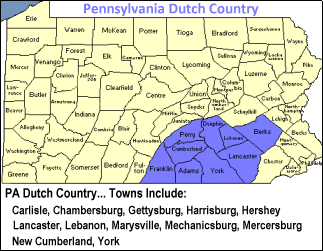
Hexerei, the dark side of folk magic...
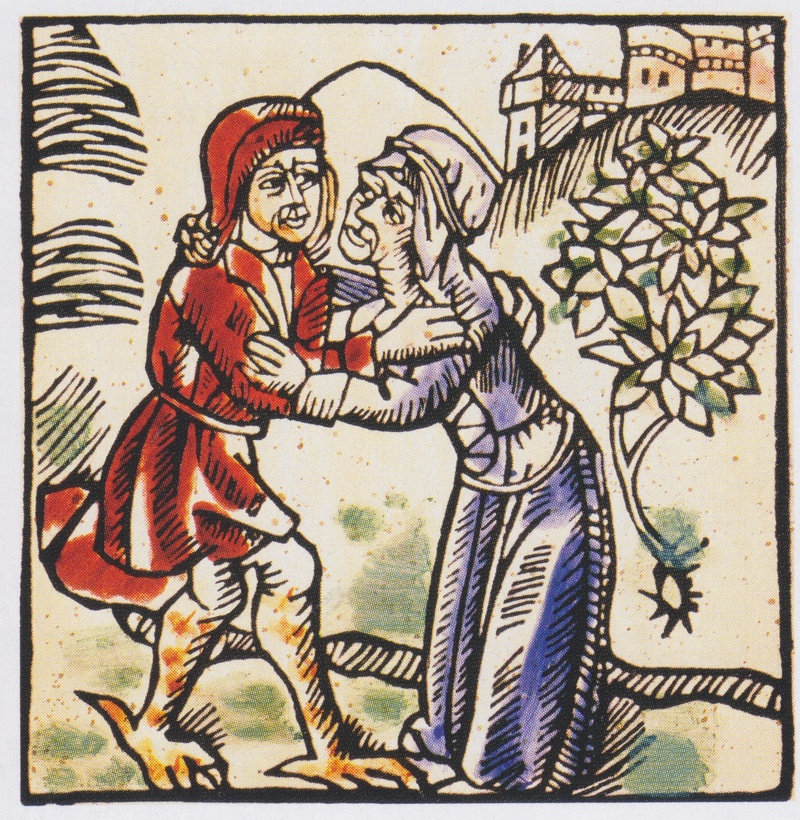 Hexerei, in the mind of the PA Dutch, is the practice of witchcraft. Witchcraft, in the eyes of the early settlers, was identified as malevolent magic used to cause harm. Contrary to popular belief, there were no "good wiccan witches" in America prior to the coming of Ray Buckland, and so witchcraft was thought of as "bad" and that was that. Those who would "try" for you (as they called it, "trying" meant to work for you) and use their skills for good were the Brauchers, or Powwow. Those who were not-so-good would be referred to as Hexerei. Hexerei differs in it's approach to healing magic because it is self-serving; meaning designed only to satisfy the ego of the witch/hex who is working the magic. Where Powwow is a gift from God; used to heal and protect; Hexerei is a manifestation of the Ego and utilizes spirits and demons and other dark forces to attain the harmful and malevolent desires of the caster.
Hexerei, in the mind of the PA Dutch, is the practice of witchcraft. Witchcraft, in the eyes of the early settlers, was identified as malevolent magic used to cause harm. Contrary to popular belief, there were no "good wiccan witches" in America prior to the coming of Ray Buckland, and so witchcraft was thought of as "bad" and that was that. Those who would "try" for you (as they called it, "trying" meant to work for you) and use their skills for good were the Brauchers, or Powwow. Those who were not-so-good would be referred to as Hexerei. Hexerei differs in it's approach to healing magic because it is self-serving; meaning designed only to satisfy the ego of the witch/hex who is working the magic. Where Powwow is a gift from God; used to heal and protect; Hexerei is a manifestation of the Ego and utilizes spirits and demons and other dark forces to attain the harmful and malevolent desires of the caster.
My advice to you: don't go there. I've personally known several individuals who have crossed this line, and it's done them no blessing, trust me.
Charm Against Sorcery
Take elm wood on Good Friday. Cut the same into two inch pieces while calling the Holiest Names. Cut upon them, in the three holiest names, three crosses. Wherever such a slip is placed, all sorcery will be banished.
Witchraft Road in Berks County. 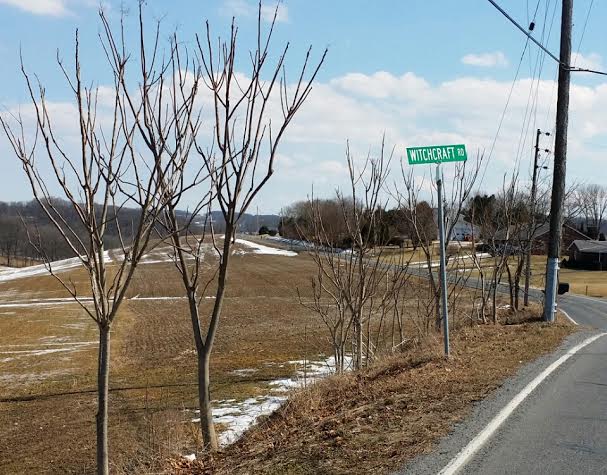
"First, you must understand that the Dutch (PA Dutch) define a witch differently. There's none of this "good witch" and "bad witch" nonsense. A witch is a witch and is up to no good. Anyone with a moral agenda is a healer and a Braucher, not a witch."
-Once Upon a Hex, Dennis Boyer, 2004
"Whenever a witch died, her mantle descended to her daughter, and likewise the wiles of the witch doctors (powwower) who were supposed to be capable of combating her influence were usually handed down from father to son."
-The Pennsylvania German, page 116, Henry A. Schuler, 1908
"Accordingly, the incantations of the witch-doctors (powwowers) make extensive use of religious symbols and prayers in which one easily recognizes the survivals of liturgical weapons employed by the mediaeval church in its warfare against witchcraft."
-Journal of American Folklore, 1904
Powwow teaches dozens of charms to protect against witchcraft, and in fact places witches on equal footing with thieves, cheaters, robbers, murderers, evil spirits, and sometimes wild animals...
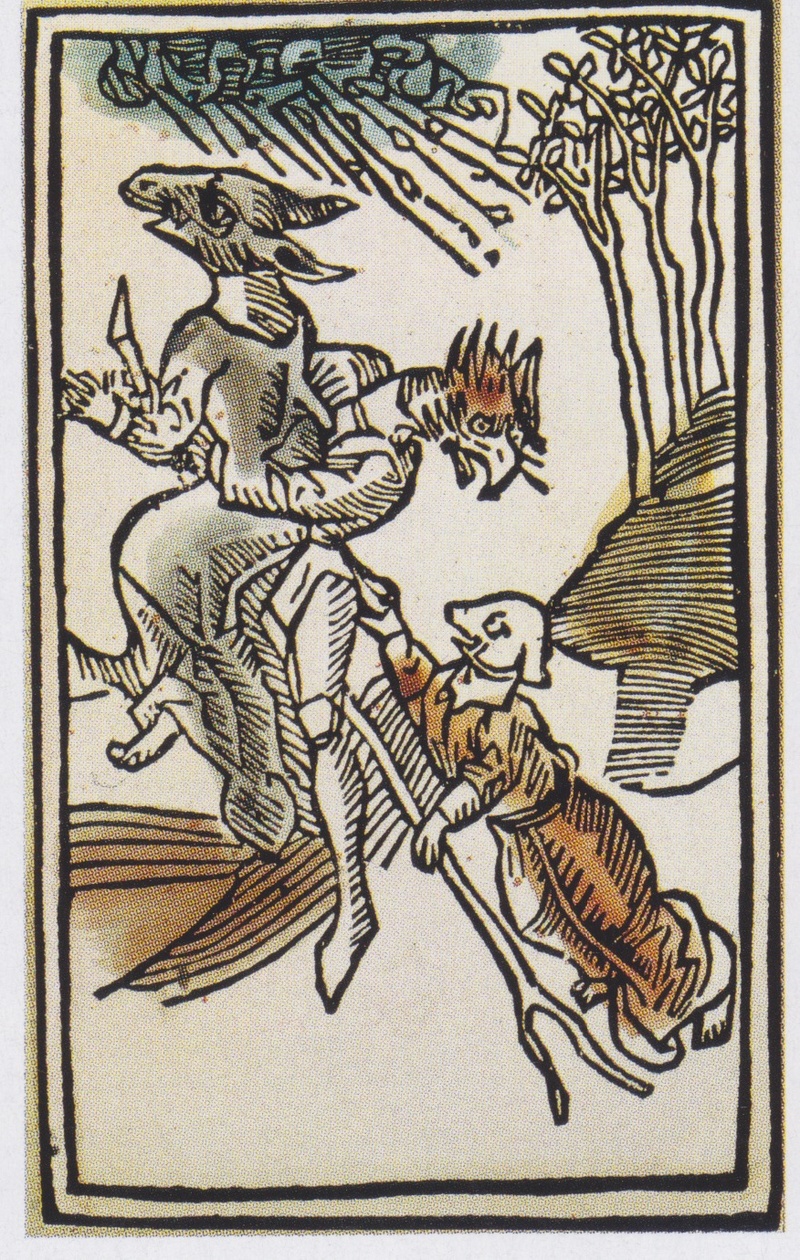 To prevent being Cheated, Charmed, or Bewitched, and to be at all times blessed.
To prevent being Cheated, Charmed, or Bewitched, and to be at all times blessed.
Like unto the cup, and the wine, and the holy supper, which our dear Lord Jesus Christ gave unto his dear disciples on Maundy Thursday, may the Lord Jesus guard me in day time, and at night, that no dog may bite me, no wild beast tear me to pieces, no tree fall on me, no water rise against me, no firearms injure me, no weapons, no steel, no iron cut me, no fire burn me, no false sentence fall upon me, no false tongue injure me, no rogue enrage me, and that no fiends, no witchcraft and enchantment can harm me. Amen. -Romanus-Buchlein, 1788
NOTE: Where the mention is made of 'witchcraft'; this does not automatically include those who consider themselves to be 'witches' in the modern, primarily neo-pagan sense of the word; such as with the religion of Wicca. "Witchcraft"; as it applies to this website and the PA Dutch, is the practice of MALEVOLENT magic designed to cause discordance and harm. This website does not endorse or support this type of magic.
Hex Hollow is available!
Get your copy of Hex Hollow! It's a fantastic documentary detailing the beliefs of witchcraft and powwow in early Pennsylvania history and the role that both played in a 1928 murder! CLICK HERE for ordering options!
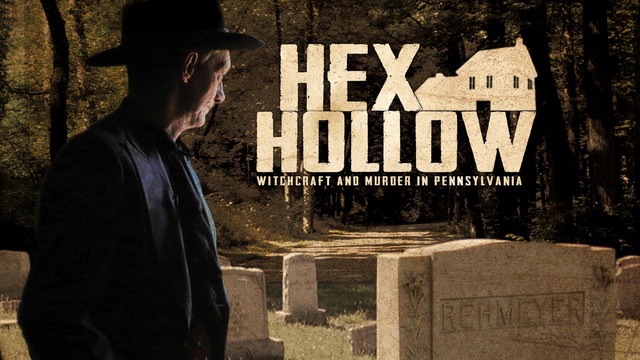
About me and my work...
Powwow is an extremely important part of my life and I truly love the culture of the Pennsylvania Germans; a culture in which I was raised and am very much a part of today. Powwowing is more than a simple little magical system; it is truly a way of life. It's a devotion to the preservation of a culture, the power of faith, and the commitment to helping others. I have worked in many venues to teach Powwowing over the past few years; including public seminars, private group workshops, instructional videos, radio programs, online chat interviews, university lectures, discussion forums, this website, and my own published works.
This website was created to share my experience of Pennsylvania Dutch Powwowing with you and teach the system as it is known within our culture. There are many great websites and resources to help you understand the many different aspects of PA Dutch culture; including it's history, customs, beliefs, and even recipes!
For an extensive listing of links to many academic and historical sources about Pennsylvania German history, culture, religion, and powwow practice, please see the FREQUENT QUESTIONS link at the top of the screen.
If you'd like to read more scholarly work about the Pennsylvania Dutch, then I highly recommend the website archives for the Kutztown University Library, which can be viewed HERE. 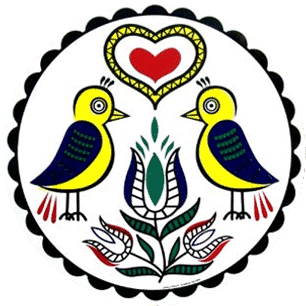
If you are interested in reading about the progression of the Pennsylvania German language, which is a major identifying factor amongst the PA Dutch; it may even be said that it helped define the culture; I suggest reading THIS LINK.
Here's a nice news clip about a local guy that teaches PA Dutch speak. (note: if the video does not appear below, hit your browser's refresh button, that should fix it)
Here is the WIKIPEDIA PAGE describing the Pennsylvania Dutch, who they are, where they come from, and how the culture has maintained a strong presence in South Eastern and South Central Pennsylvania for over 300 years.
Here is a fantastic article about the Amish and Mennonites.
The PENNSYLVANIA GERMAN SOCIETY is dedicated to the preservation of the PA German culture, in all of it's aspects. While my website deals specifically with PA Dutch Powwowing, that is just one small part of our culture. Check out their website for updates on all the great work they do!
My grandparents were Pennsylvania German through and through (descended from Henne, Koenig and Hauser lines in Berks County and Austria), and I remember meals at my grandparent's home were always a good time, with lots to choose from. I found a nice blog with all of my favorite PA German recipes that remind me of home! GO HERE to check them out!
There are many individuals working hard to preserve the culture and language and beliefs and customs of the Pennsylvania Dutch. For those interested in helping to preserve the culture, preserve the tradition of Powwowing, and learn the system of Powwowing for themselves, this website is for you.

Me watching the workshop attendees practice a healing charm. Moonbeams in a Jar (Selinsgrove Pennsylvania), Powwowing seminar November 2010. This was my first experience teaching Powwowing in a public venue and I had traveled nearly three hours to do this seminar. When we arrived at the shop and began setting up my equipment, I realized I had left all of my seminar notes at home and just went with it and it ended up being a fantastic seminar. That's when I learned that if you are passionate about something, you don't need notes. I do my best teaching when I don't plan it out.
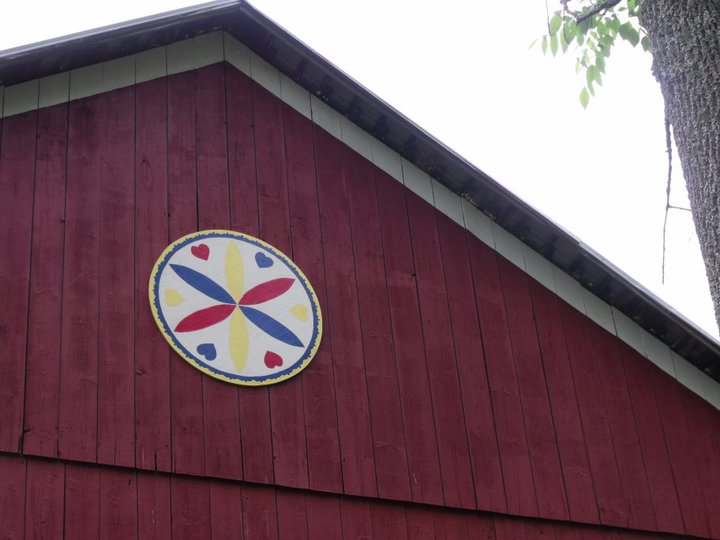
Hex signs are a common site on barns in PA Dutch country; particularly in Berks County, but also common in other Southeastern and Southcentral PA counties. The rosetta is a common symbol on hex signs. Most hex signs are made with primary colors.
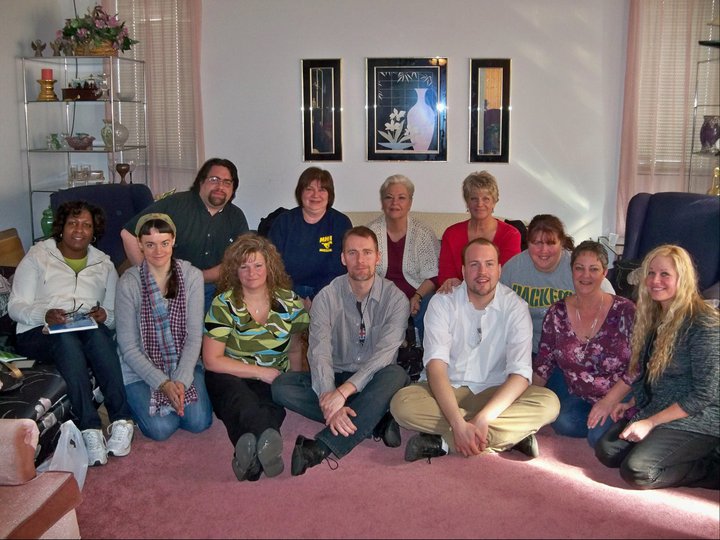
This is one of the groups I taught while in Charleston, West Virginia (January 2011). There were two back-to-back seminars that day. It was exhausting, but loads of fun. There were two really awesome groups of people and, I didn't know it until this event, but the folks in Charleston have a lot of knowledge about Appalachia Granny Magic, which is not so common here in PA Dutch country. Although the practices are related in many ways, their magic has a unique energy that I had never experienced until that day.
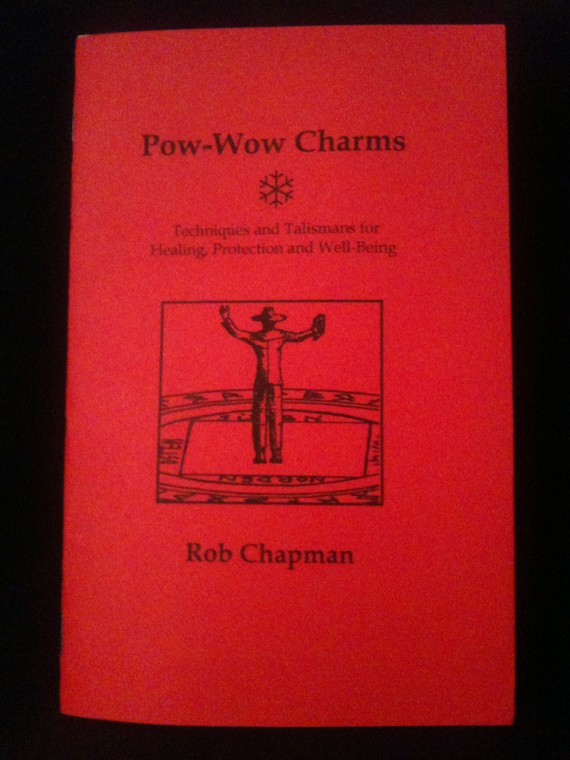
This was my first chapbook, published in 2010. The lesson I learned from making this was that there is a need and a want for proper Powwow information. Because of the success of that booklet, this website saw a lot of traffic so I began devoting all of my free time to building the information here. This booklet is no longer available, which is probably a good thing because looking back on it I am not happy with the work I did then. However, it was a springboard for further research and work, and I'm grateful for the experience!
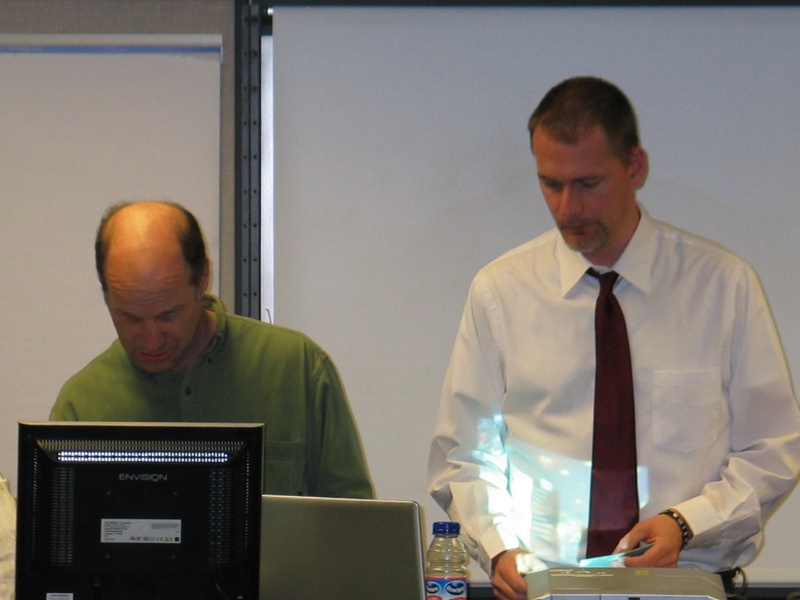
In April 2012 I was invited by Indiana University of Pennsylvania to speak at a religious studies class then the next day asked to do a seminar for the University about PA Dutch Powwow. This was definitely one of the coolest experiences I ever had; traveling to Indiana PA, meeting some really cool kids and professors, and having a chance to share what I love with the school. This picture is me (on the right) and the computer tech guy (on the left) setting up my projector. It was a great time!
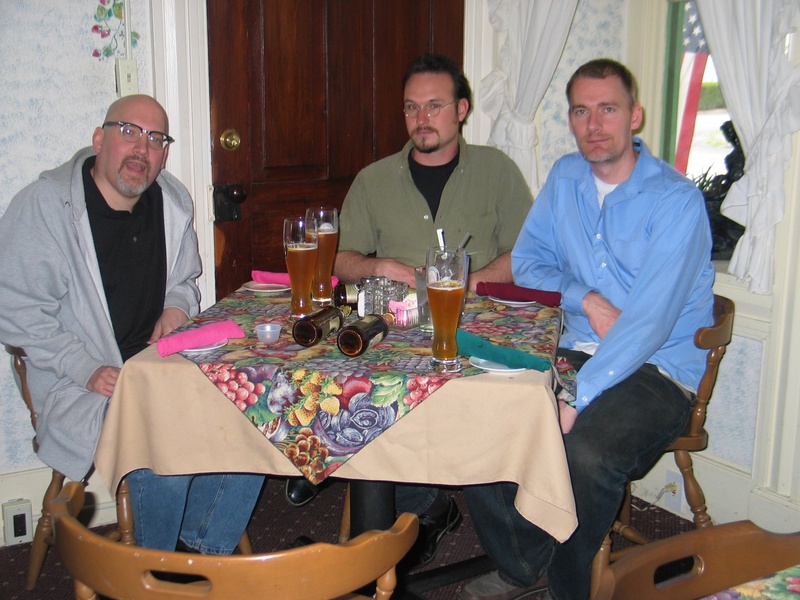 In Spring 2012 Bill and I met up with Chris Bilardi (left), and a mutual friend, Patrick Donmoyer (center). Chris is the author of the Red Church. Patrick works with the Kutztown University Historical Society in Berks County PA and studies all aspects of Pennsylvania Dutch culture. This picture was taken at Stony Creek Inn, an authentic Austrian restaurant in Berks County. One of the most memorable points of this day was the group of older Austrian people sitting at a nearby table singing traditional Austrian songs.
In Spring 2012 Bill and I met up with Chris Bilardi (left), and a mutual friend, Patrick Donmoyer (center). Chris is the author of the Red Church. Patrick works with the Kutztown University Historical Society in Berks County PA and studies all aspects of Pennsylvania Dutch culture. This picture was taken at Stony Creek Inn, an authentic Austrian restaurant in Berks County. One of the most memorable points of this day was the group of older Austrian people sitting at a nearby table singing traditional Austrian songs.
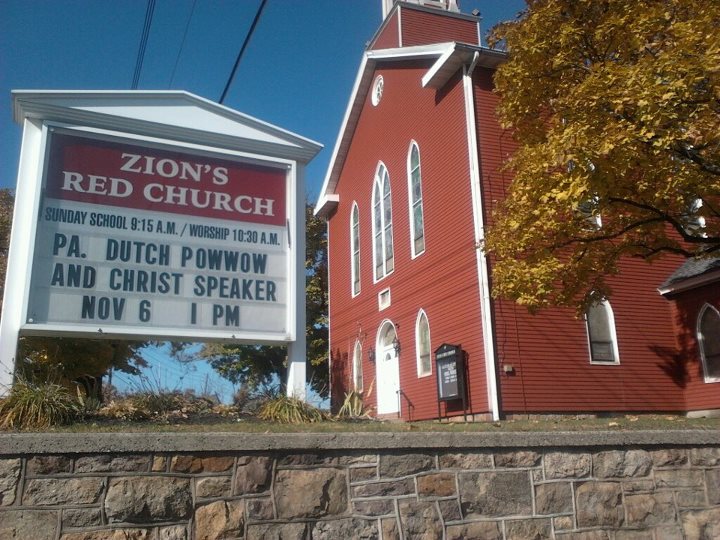
As is traditional in Pennsylvania Dutch culture, PowWow is an aspect of religion, and that religion is often Lutheran or Anabaptist. In some instances, Catholics practice PowWow (Hohman was a Catholic). In my church, PowWow is a part of our congregation's history and many within the congregation have either had personal experience with a PowWow in their community or have had a PowWow in the family. This is the truest and most sincere manifestation of Powwow; a part of the people, the culture, and the church.
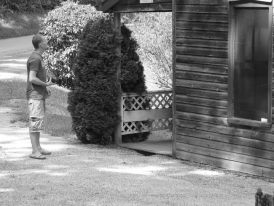 Bill and I live about 30 minutes away from the Nelson Rehmeyer homestead. This is me at the Rehmeyer house in 2011, reading the plaque posted on the porch.
Bill and I live about 30 minutes away from the Nelson Rehmeyer homestead. This is me at the Rehmeyer house in 2011, reading the plaque posted on the porch.
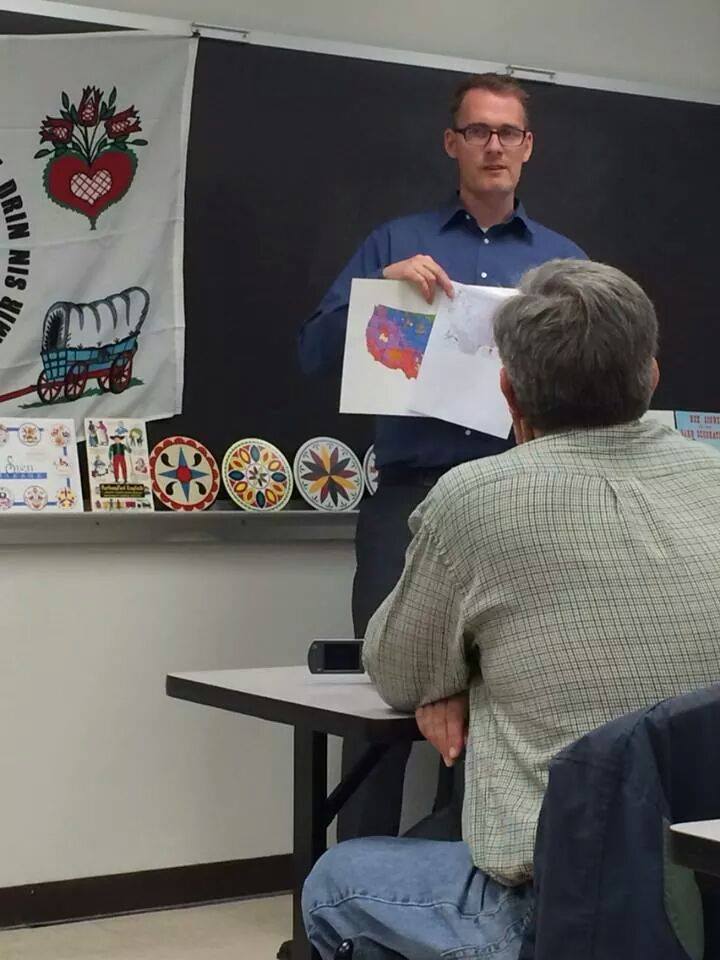
In 2014 I taught a class at Baltimore College about Powwowing and the Pennsylvania Germans. What I learned from this experience is that very little is known or understood of our culture once you leave the borders of Pennsylvania. Some of the students had never seen or heard of hex signs until that day! It was an enjoyable experience, and I would gladly go back and do it again.

In my area I'm known as the Powwow Guy.
Daily charm to be spoken that nobody may hurt you and that you remain secured against all assailants
Now I will walk over the threshold. I meet three men, not yet very old. The first is God the Father; the other is God the Son; the third is God the Holy Spirit. They protect my body and soul, blood and flesh, that in no well I fall, that water may not swell me at all, that a rabid dog may never bite me, that shot and stone may never smite me, that spear and knife may never cut me; that never a thief may steal the least from me. Then it shall become like our dear Saviour's sweat. Whoever is stronger and mightier than these three men, he may come hither, assail me if he can, or forever keep his peace with me.
+ + +
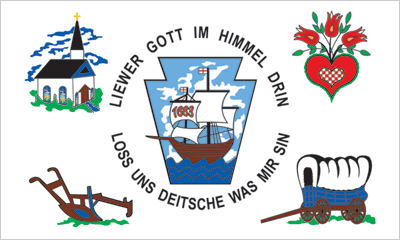
Pennsylvania German Flag
The flag of the Pennsylvania Germans (sometime called 'the Pennsylvania Dutch', incorrectly, of course). "Die Pennsylfaanisch Deitsch Faahne" created by "Die Grossdaadi Grundsow Lodge" (The Grandfather Groundhog Lodge) and co-sponsored by other affiliated Pennsylvania German organizations. Dedicated Oct.6, 1989 in Lehigh County Courthouse, Allentown, Pennsylvania.
"COLORS: It is not just a coincidence that the Pennsylvania German flag uses the red, white and blue colors. It signifies that in spite of the ethnic backgrounds, we are first of all and foremost loyal and devoted Americans.
OTHER SYMBOLS on the flag:
SAILING SHIP 'CONCORD' - commemorates the journey from Krefeld to Germantown in 1683, the start of a great migration of German speaking people in search of greater religious freedom and better social and economic conditions in a new area of the world.
KEYSTONE - the symbol of Pennsylvania, the principal and permanent settlement for the majority of early German migrants.
CHURCH - indicative of the devoutness of the Pennsylvania Germans whose religious convictions were a strong motivating force in their daily lives.
PLOW - symbolizes probably the most predominant of Pennsylvania German professions, the farmer. The plow further symbolizes the Pennsylvania German farm as a source of food for state and nation.
HEART & TULIP - represents the great skills and contributions of the Pennsylvania Germans in the field of arts and crafts.
CONESTOGA WAGON - symbolizes the Pennsylvania German's contribution to the need for transportation. The"Ship of Inland Commerce", as it became known, played a very important role in the Revolutionary War under the guidance of Pennsylvania German teamsters. It also played a tremendous role in the westward expansion of our nation.
DIALECT EXPRESSION - "Liewer Gott Im Himmel Drin Loss Uns Deitsche Was Mir Sin" "Dear God in Heaven, Leave Us Germans What We Are", implying "Let us keep our traditional ways". This dialect expression symbolizes the main instrument of communication used by the Pennsylvania Germans in their everyday social and economic associations."
Chris Kretowicz, 18 September 2002 Read the full article HERE
"The Christian church was at the heart of the Pennsylvania German community."
-quote from Free Library of Philadelphia 'Fraktur Guide', a discussion and history of the Pennsylvania German culture and art
I love the Pennsylvania German flag and I hope that all of my efforts over the years to preserve the practice of Powwow in it's most traditional form helps to "keep our traditional ways". It was so important to the PA Dutch that they not lose their cultural identity. With the passing of my grandparents, very little remains in our family of their influence, so this site and all of my work is dedicated to them and all the family (known and unknown) in the Bankes, Henne, Koenig, and Hauser lines in my family from Berks County, Schuylkill County, and Austria.

The Pennsylvania Germans were of numerous religious persuasions; including Lutheran, Anabaptist (Mennonite and Amish), Quakers, Brethren, and Moravians. These were the main religious influences. Sometimes people mistake me for Rosicrucian or Theosophist (might by my mystical side) or even Amish (?!). But the truth is that I'm a member of the Reformed (UCC) and ELCA church. Here is a nice article explaining the differences between these religious groups and how you can tell them apart.
If you'd like to read about the immigration of the people who would become known as the Pennsylvania Dutch, I recommend READING THIS. It is a record of the waves of immigration and early settlements in Pennsylvania.
For more history on the Pennsylvania Germans, I recommend this free book download, The Pennsylvania-German: devoted to the history, biography, genealogy, poetry, folk-lore, and general interests of the Pennsylvania Germans and their descendents.
Finally, no study of PA Dutch culture or PA Dutch Powwow would be complete without reading FOLK-LORE OF THE PENNSYLVANIA GERMANS published in 1888.
I've gotten several requests to translate German into English for various purposes. I love these emails but unfortunately I am no expert in German or PA Dutch dialect, so I recommend THIS LINK for easy translations. Keep in mind that there are variations in dialect and this translator is not a perfect system, but it will help. If you are interested in learning to speak the Pennsylvania German language, then go to THIS LINK for a series of lessons! It's free!
Here is a fairly extensive website called Pennsylvania Dutch LIfe. There are links to all sorts of pages of interest for those who want to learn more about the Pennsylvania Dutch culture.
Want to experience some authentic PA German music? Watch this video! (note: if the video does not appear below, hit your browser's refresh button, that should fix it)
This healing tract is from a Lutheran Pastor, George Mennig (1773-1833), who was also a PowWow doctor. The tract, written in German, is from Schuylkill County PA. It is a cure for 'wildfire' and reads "wildfire fly, fly, fly...the red string chase you away."
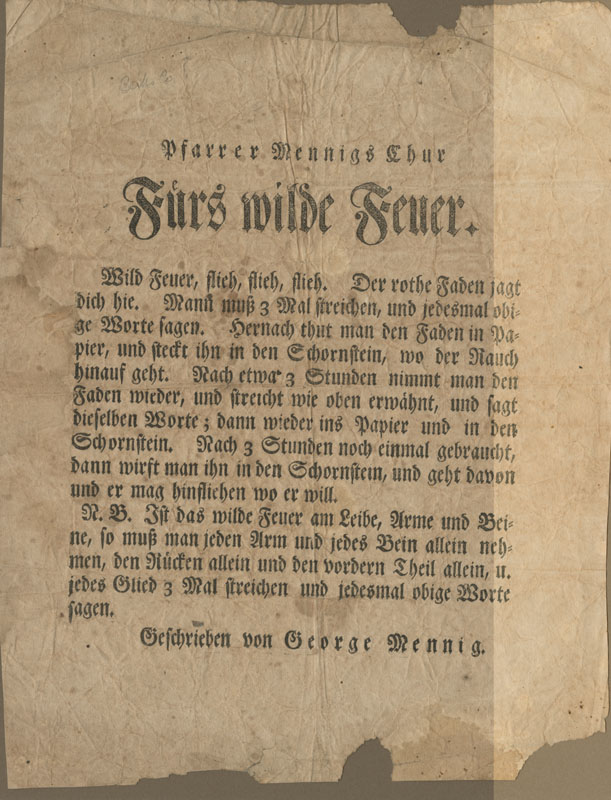
There are many in America who believe neither in a hell nor in a heaven; but in Germany there are not so many of these persons found. I, Hohman, ask: Who can immediately banish the wheal, or mortification? I reply, and I, Hohman, say: All this is done by the Lord. Therefore, a hell and a heaven must exist; and I think very little of any one who dares deny it.
-John George Hohman, Long Lost Friend, Reading PA 1820
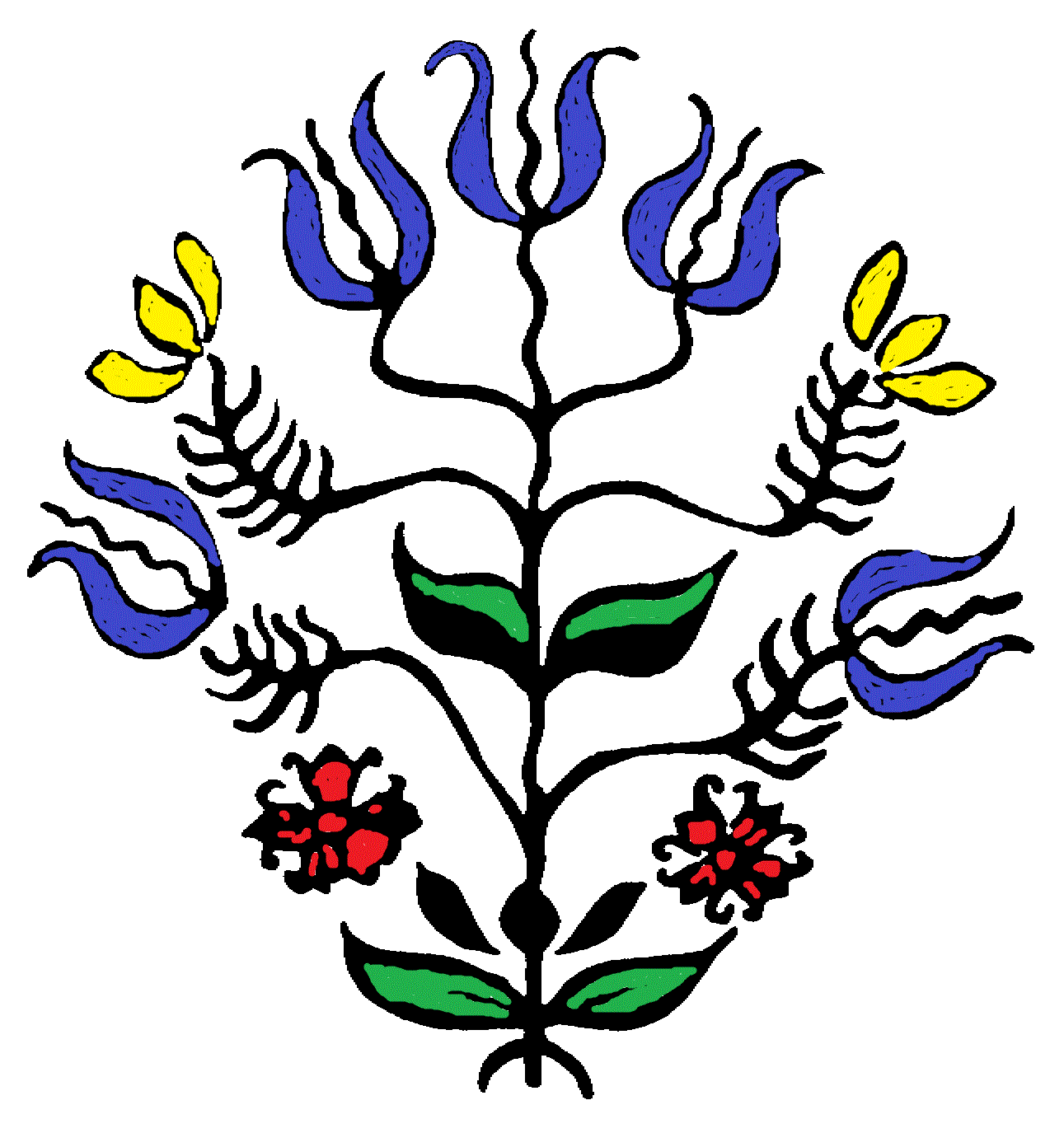
Whatever objections may be raised against this book by disbelief and jealousy, these pages will, despite all such objections, contain naught else but truth divine, since Christ himself hath commanded that all ye may perform, ye shall do in the name of God, the Son, and the Holy Spirit, so that the Devil may not possess any power over anything whatsoever to do his will; and it will thus happen unto many persons, as was experienced by Job, who, having lost his fortune and his children, by his endurance and perseverance in the belief of God, and the blessings of the good deeds which were performed by him every day, Job wrested the power from the Devil, and he afterward became wealthier than he ever was before. Thus we also must act, that is, bless our possessions, our homes, and entrust them to the care of the Lord, and doubtless the Devil will have to retire and succumb.
-Egyptian Secrets of Albertus Magnus, Allentown PA 1869
UPCOMING EVENTS!
Monday, October 16, 2o23, I will be doing a Powwow presentation at the Mount Joy Historical Society in Lancaster County at 7:15pm!
Chris Bilardi's Powwow book has become one of the most well-known how-to books for the study of our tradition.
"One thing must not be omitted, in conclusion, and that is, we must first become Christians before we can perform cures by Christian methods."
Recent Blog posts!
Here is a fun blog called Gents of Lancaster that talks about PA Dutch lifestyle!
Here is a nice article about the importance of religion in the history of the Pennsylvania Dutch culture. CLICK HERE TO READ!
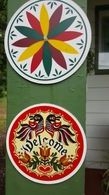
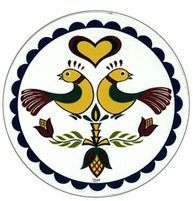
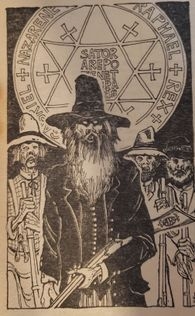
An all-purpose healing charm
Â
Heile, heile, Segen.
Drei Tage Regen.
Drei Tage Dreck.
Und jetzt ist alles weg
+ + +
Translation:
Holy, holy blessing
Three days of rain
Three days of muck
And all is gone.
+ + +
To insure safety from an angry dog
Dog, hold thy nose to the ground;
God has made me and thee, hound.
To cure a person of worms
You are a little worm, not entirely grown.
You plague me in marrow and bone.
You may be white, black, or red,
In a quarter of an hour you will be dead.
A Charm for Personal Safety
Cross of Christ and Crown of Christ and Jesus Christ; red blood, be to me at all times and all hours good. god the Father is before me. God the Son is at my side. God the Holy Ghost is behind me. Who now is stronger than these three persons may come to seize me.
+ + + then follow up with three Paternosters.
To Compel a dog, horse, or other animal to follow you
Casper guide thee, Balthasar bind thee, Melchior keep thee
Three times, utter these words into the animal's right ear.
For Wounds and Stopping of Blood
Blessed is the day on which Jesus Christ was born; blessed is the day on which Jesus Christ died; blessed is the day on which Jesus Christ arose from the dead. These are the three holy hours; by these N.N., I stop thy blood. Thy sores shall neither swell nor fester; no more shall that happen, than that the Virgin Mary will bear another son.
+ + +
Protection from Sorcery
Take elm wood on Good Friday, cut the same while calling the holiest names. Cut chips of this wood from one to two inches in length. Carve on them, in the three holiest names, three crosses. Wherever such a slip is placed, all sorcery will be banished.
To Stop Blood
There stood three roses upon our Saviour's grave. The first is mild, the other is good, the third shall stop the blood.
+ + +
A Protective Talisman
To be hung in the home, hidden in a secret place, or carried with you.

A charm to make a thief return stolen goods
Write upon two pieces of paper the following words, and attach one to the top of the door, and the other under the threshold, and the thief will return on the third day and bring back the stolen articles:
Abraham bound it †
Isaac redeemed and found it †
Jacob carried it home †
it is bound as tightly as steel and iron, chains and fetters. † † †
To Remove Skin Infections
Many of the old charms refer to a skin infection known as "wildfire". This referred to a very specific skin condition called erysipelas. I use the term to refer to any skin condition. Feel free to change it to something else that might work better for you if you choose not to use the term "wildfire".
With a red string, pull it tight between your two hands. First touch the top of the individual's head then sweep the string down the front of the body and away from the person three times while you repeat the following three times:
Wildfire
fly, fly, fly
The red string chase you
away, away, away
Then speak the baptismal name of the individual then seal with the words:
In the name of the Father, Son, and Holy Spirit. Amen.
To Stop Blood
On a slip of white paper, write the following:
+++Pishon+++Gihon+++Tigres+++Euphrates+++
Place this paper over the wound to stop the blood.
Charm to cure burns
For mild burns on the skin (don't try to treat serious burns, get medical attention immediately):
At the end of each spoken line, gently blow on the burned area (GENTLY!!!)
Fire of God (gentle breath)
Lose thy heat (gentle breath)
As Judas lost his color (gentle breath)
When he betrayed our Lord (gentle breath)
In the garden of olives (gentle breath)
Amen, Amen, Amen (gentle breath)
Repeat for a total of three times, seal the working.
To Guard your home against thieves and witches
Take a glass of water and repeat over it 77 times:
Adonai, Elohim, the LORD my God
Pour the water around the perimeter of your home. This is believed to prevent witches and thieves from infiltrating your property. Made more powerful if done on a Holy Day or after taking sacrament at church.
Interesting charm and it's language variations
This was shared by a member of my church as she learned it as a child growing up in PA Dutch country:
"Heile, heile, Hinkeldreck! Marifree ischt olles weg."
or, another variation,
"Heile, heile, Hinkeldreck! Marifree ischt olles recht."
in German,
"Heiliger, heiliger, Huhnerdreck! Morgen fruh ist alles weg (recht)."
and, in English,
"Holy, holy chicken dirt. Early morning it is gone/away/right."
and, made to rhyme, we get the familiar charm as demonstrated below,
"Holy, holy chicken dirt. Tomorrow morning it won't hurt!"
It is said that to spit on the area of pain helps seal the magic.
To Keep Witches Away from your Property
In the Amish community, there is an old belief that if a bundle of St. John's Wort was hung over the door of the house or barn, no witch could enter and no witchcraft could effect the people or animals within. In these days of the prevalence of hexerei, why take chances?
Sealing a Powwow working
When a charm calls for sealing the working with the sign of the cross, this is done with the right hand, made into a fist, and the thumb straight out (like a 'thumbs up' position). The cross is 'drawn' over the affected area with the ball of the hand just below the thumb; typically three times; spoken in the name of the Father, the Son and the Holy Spirit.
For Easing Pains
Hold hand over painful area and recite three times:
Holy, Holy chicken dirt
Tomorrow morning, it won't hurt
Blow on area three times, then seal with the sign of the cross.
To Banish Fevers
Suspend, upon a Friday, a letter containing the names set forth below, between the hours of eight and nine, upon the patient's neck, in the following manner:
Fold together, and tie it in grayish red cloth, which must be unbleached, and pierce through the cloth and the letter, three holes. Draw red thread through them, while calling the three holiest names. Suspend the same around the neck of the patient, and let it remain eleven days. After taking it off, burn it before the lapse of one hour:
H B R H C H T H B R H
H B R H C H T H B R
H B R H C H T H B
H B R H C H T H
H B R H C H T
H B R H C H
H B R H C
H B R H
H B R
H B
H
Â
Against Evil Spirits and all manner of Witchcraft.
I.
N. I. R.
I.
Sanctus. Spiritus.
I.
N. I. R.
I.
All this be guarded, here in time, and there in eternity. Amen.
You must write all the above on a piece of white paper, and carry it about you. The characters or letters above, signify: "God bless me here in time, and there eternally."
To Protect your home from all manner of evils
In chalk or white stone, just outside your doorstep, mark on the ground three crosses spaced equal distance apart while saying:
Praise be to the Lord, the God of Israel, because he has come and has redeemed his people. He has raised up a horn of salvation for us in the house of his servant David as he said through his holy prophets long ago, salvation from our enemies and from the hand of all who hate us.
To Soothe Aches and Pains
Place hands gently on the afflicted area.
Repeat the following for a total of three times:
I will exalt you, O Lord,
for you lifted me out of the depths
and did not let my enemies gloat over me.
O Lord my God, I called to you for help
and you healed me.
O Lord, you brought me up from the grave;
you spared me from going down into the pit.
(Excerpt from Psalm 30, spoken with devotion.)
To Stop a Wound from Bleeding
Say three times over the wound:
Mary goes throughout the land
She has two pitchers in her hand;
In one is blood, in one is water;
Blood stay; water go.
Make three signs of the cross over the wound.
To Determine if you have been Bewitched
Rub a raw egg from the top of your head down the length of your body to your feet three times. Break the egg into a dish or fireplace. If there is blood in the egg, it is a sign that negative witchery has been cast on you.
To Remove Negative Witchery and Return it to the Witch
Boil a piece of beef and while it is cooking, keep sticking it with a needle. The one who bewitched you will have the same pains and the spell upon you will be broken.
To Prevent Weak or Malicious Persons from doing you an injury
On a piece of paper write the following:
Dullix, ix, ux. Yea, you can't come over Pontio;
Pontio is above Pilato. + + +
Hang this above the main entrance to your house and it will certainly protect you from malicious persons!
To Protect The Home
Go to each window and door individually. In the air make the sign of the cross or protective star while saying:
Three angels with three swords stand before the house of God.
The first is courage,
the second is strength,
the third strikes down all enemies.
In the name of the Holy Trinity!
Weather Charm
Hold a red knife in the air, blade facing oncoming storm, and say three times:
"Three angels ride the winds
to lands both far and near
Go west, go east, go south, go north
but do not linger here!"
Stick the knife into the ground.
To Stop Blood
Place a red knife gently over the affected area.
Three ladies came from Jordan's land
Each with a bloody knife in her hand
Stand blood, stand, in the name of God stand
Bloody wound, in God's name mend!
+ + +
For Justice in Court
Carry a bit of Pot Marigold (Calendula) on the day of your court appearance and, prior to leaving your home, recite Psalm 20 three times.
For Protection

The SATOR charm can be copied onto a slip of paper then taped to the inside of your front door to protect your home from thieves and intruders.
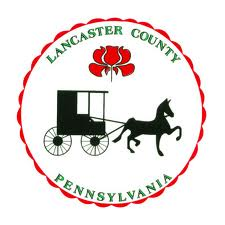
The Lancaster County Hex. It doesn't have any mystical meaning, it's purely a decorative advertisement piece. :)

Another variation of the Double Distlefink, meaning double good luck.
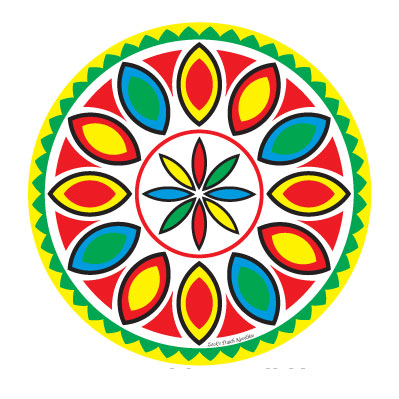
Known as the "Daddy of all Hexes", this combination of color and symbology provides good luck all year round. The twelve petals around the circle symbolize the twelve months of the year.

The Distlefink is my favorite hex sign image. The double Distlefink is a sign of Double Good Luck.
To view or purchase hex signs, go to ZOOKS DUTCH NOVELTIES!
